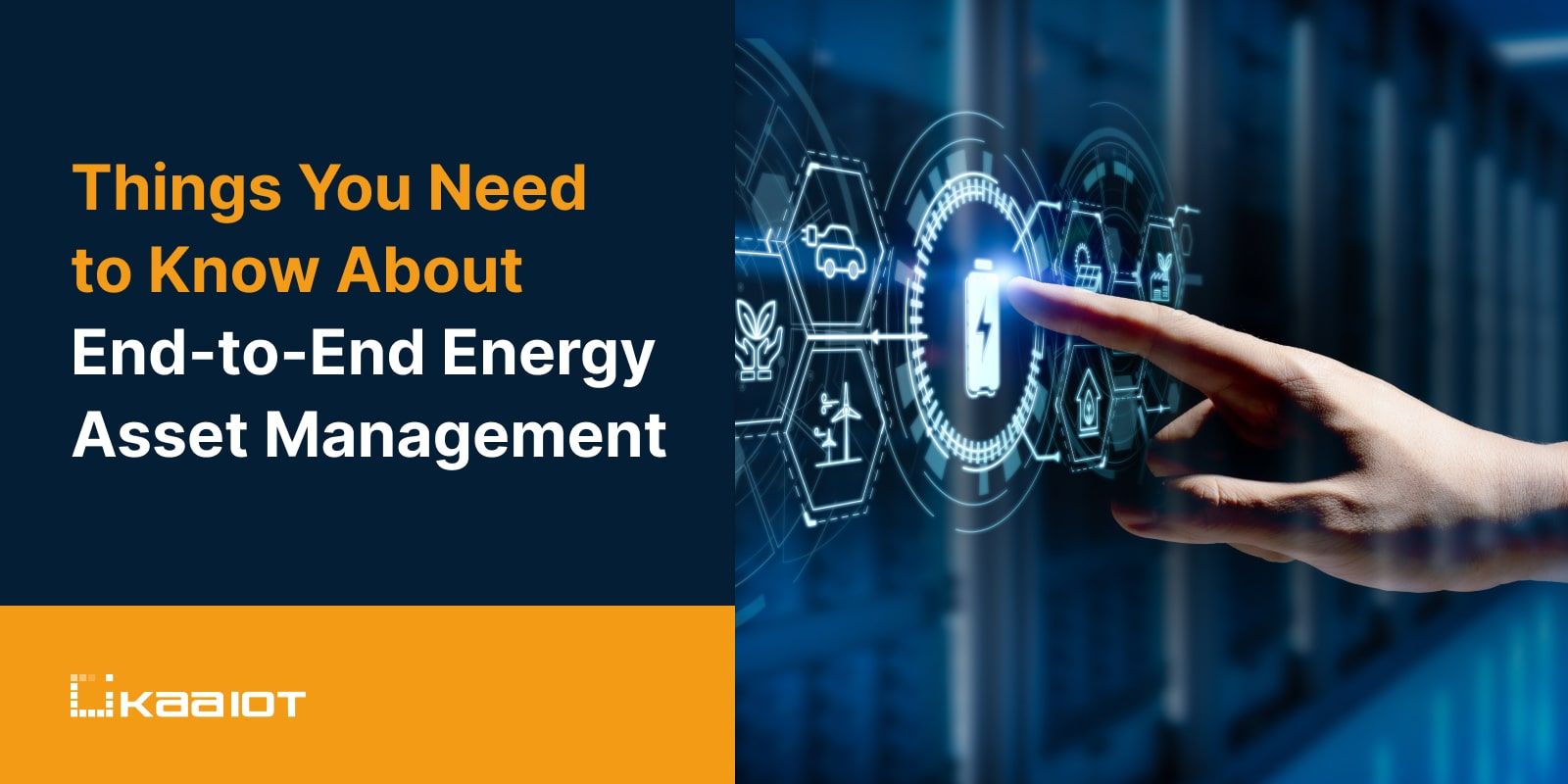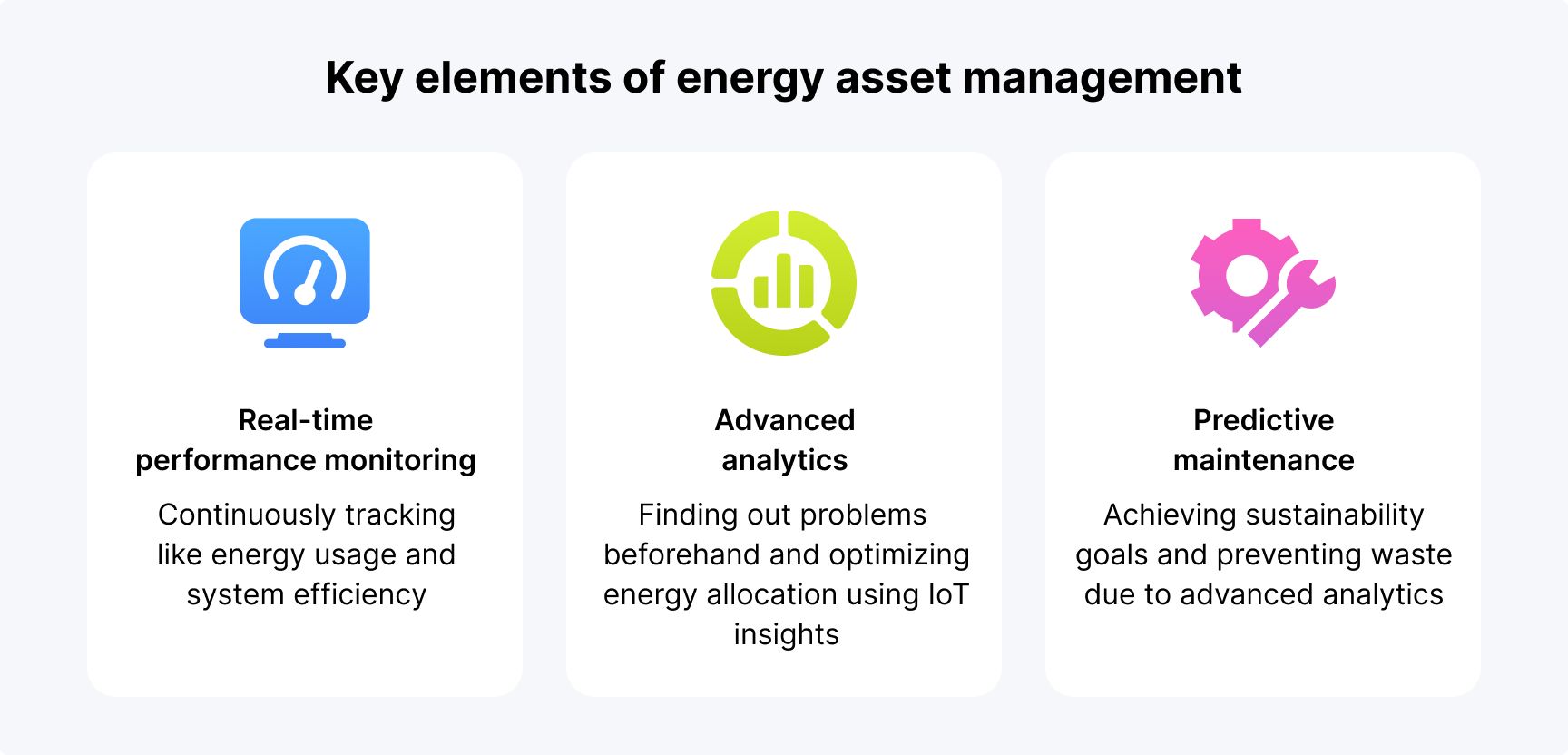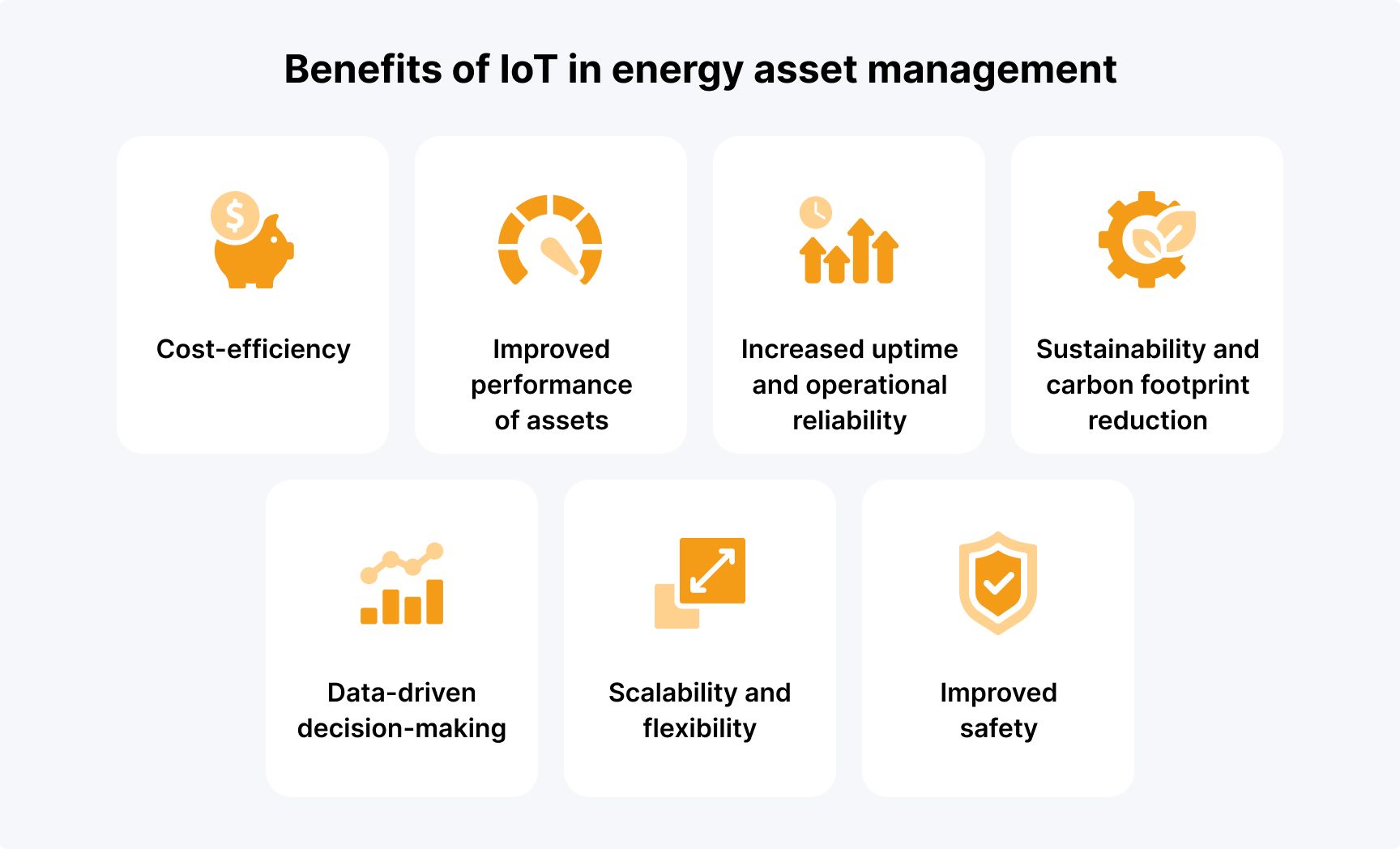Things You Need to Know About End-to-End Energy Asset Management

Did you know that poor asset management in the energy sector costs businesses up to $60 billion annually around the world? The increasing demand for energy, stricter sustainability goals, and ever-growing operational complexities are pressingly calling for smarter solutions.
That's where end-to-end energy asset management steps in – offering a centralized, flexible, and SCADA-free approach that streamlines operations and maximizes efficiency. These systems, powered by the IoT, change how organizations monitor, optimize, and maintain energy assets at peak performance.
Now, let's discuss in more detail how this works, its benefits, and how Kaa IoT platform can make it all happen.
What is energy asset management?
Energy asset management is a methodical process of monitoring, optimizing, and maintaining energy-related assets. It enables maximum operational efficiency with minimum cost and environmental impact. A variety of energy assets exists that range from renewable energy systems – panels and wind turbines – to conventional power grids, industrial machinery, building-level systems like HVAC units, and lighting infrastructure. Practically, asset management in the energy field would be composed of three elements:
- Real-time performance monitoring, like energy usage, system health, and output efficiency, continuously.
- Advanced analytics that finds out problems beforehand and puts an end to their causing costly downtimes.
- Predictive maintenance that helps to optimize energy allocation and prevent waste, thereby achieving sustainability goals.

Why is it critical today? Energy demands are on the rise; the U.S. Energy Information Administration projects that by 2050, due to population growth, the rapid industrialization of developing nations, mounting pressures of climate change, the need to reduce carbon footprints, and an economic effect, global energy consumption will increase by 50%. Poorly managed energy assets result in inefficiencies and wastage that take up to 30% of the annual energy costs in industries.
These losses can undermine competitiveness and long-term growth when margins are tight. So, the implementation of robust solar energy asset management software will help businesses meet operational and environmental goals while unlocking hidden efficiencies. Indeed, it saves millions annually.
How does energy asset management work?
Asset management in the energy sector works in such a way that it integrates different energy-producing, distributing, and consuming assets into one system, thereby enabling smooth monitoring, optimization, and control. The assets include generation systems like solar panels, wind turbines, and fossil fuel generators; distribution infrastructure like power lines, transformers, and substations; and consumption units like HVAC systems, industrial machinery, and lighting systems.
IoT features provide seamless functionality for clean energy asset management. Smart sensors and meters inside assets track energy production, flow, and usage data. This produces real-time insights into performance metrics and inefficiencies. Edge devices process this data locally; they enable immediate actions (equipment adjustments or fault detection), which reduces latency and enhances responsiveness.
Also, connectivity protocols such as MQTT and CoAP guarantee smooth interaction between devices, while cloud-based platforms aggregate data from various sites to give operators an overall view of the energy systems via an intuitive dashboard. Such platforms use advanced analytics and machine learning algorithms that help predict equipment failure, optimize energy distribution, and find patterns that contribute to inefficiencies. Predictive maintenance, for instance, allows operators to service equipment well before any breakdown, reduces costly downtime, and lengthens asset life.
It also encompasses automation in electrical asset management. A system could prioritize using renewable sources at a time when the consumption rate is high to cut down costs and carbon emissions. If it detects stress on a vital component, the system will reroute energy to prevent failures. IoT-powered renewable energy asset management software changes disparate assets into an interconnected, intelligent ecosystem. This leads to more straightforward operation, minimal waste, and swift adaptation to the fluctuating trends of energy needs with sustainability and cost-efficiency in mind.
Benefits of IoT-powered energy asset management
Adopting IoT-powered clean energy asset management offers organizations a range of advantages: it makes operations more efficient, cost-effective, and sustainable. Key benefits include:

- Cost-efficiency
IoT systems help reduce waste and automate energy flow adjustments. Such systems make sure energy is utilized more efficiently by identifying areas of inefficiency in real time. It thus reduces energy costs by 20–30% and liberates resources for higher priorities.
- Improved performance of assets
IoT sensors enable predictive maintenance to monitor the health of energy assets and potential issues before they escalate into failures, minimizing downtime and reducing repair costs, hence extending the life of critical equipment.
- Increased uptime and operational reliability
The IoT provides energy systems with real-time monitoring and automated responses to changing conditions. If one source of power is not producing as it should, energy could be instantly routed from another source, ensuring continuous operations.
- Sustainability and carbon footprint reduction
IoT-driven insights from asset management in the solar energy sector help businesses measure and optimize their carbon emissions by integrating renewable sources and using efficient energy. This helps them comply with environmental regulations and enhance their corporate social responsibility.
- Data-driven decision-making
IoT platforms aggregate and analyze data from various assets. In return, they deliver valuable insights for better operational strategies. Businesses can use these insights to forecast demand, efficiently allocate resources, and make informed decisions about future investments.
- Scalability and flexibility
IoT systems easily integrate new assets as operations expand, whether they are renewable energy installations or traditional infrastructure upgrades. This ensures that energy management remains agile and future-proof.
- Improved safety
It monitors continuous energy assets for hazardous conditions such as overheating or electrical faults; thus, the approach enables safety through proactive accident prevention measures to make the work environment safe.
End-to-end energy asset management with Kaa
Operations grow, and hundreds or thousands of assets at multiple sites make managing energy assets efficiently even more complex. That's where the end-to-end energy asset management software by Kaa steps in: it offers a centralized, SCADA-free solution streamlining monitoring, optimizing energy use, and reducing carbon emissions.
The Kaa IoT platform empowers businesses with a full suite of tools to manage energy assets effectively – anything from renewable installations like solar farms to energy-consuming facilities. It integrates IoT capabilities to collect real-time data, generate actionable insights, and automate operations so every aspect of your energy ecosystem works efficiently.
The main features of the Kaa IoT platform are as follows:
- Centralized monitoring. Users have a unified dashboard that monitors all energy assets in real time, regardless of location. Kaa eliminates the need for multiple disconnected systems – there is a clear overview of energy flows and performance.
- Actionable insights. Advanced analytics identify areas of inefficiency, underperforming assets, and opportunities for optimization. For instance, the renewable asset management platform can identify sites with the highest carbon emissions.
- Energy and carbon tracking. There is an opportunity to track energy consumption and carbon footprints across all sites, ensuring that goals on sustainability and regulatory requirements are met. This feature will be important for organizations that look to lower their emissions towards net zero.
- Scalable architecture. Whether you're managing 50 or 5,000 assets, Kaa's platform grows with your operations, accommodating new sites and assets with ease.
Conclusion
Effective renewable energy asset management means businesses can optimize energy use, extend the life of their assets, and reduce costs – while meeting environmental commitments and adapting to changing regulations. The Kaa IoT platform does more than simplify energy management; it changes the way companies operate.
Kaa allows organizations to unlock hidden efficiencies, slash operational expenses, and make data-driven decisions through centralized operations, predictive maintenance, and real-time insights. Its flexible design means your IoT solution will scale seamlessly as operations expand, making it future-proof for businesses of any size and industry.
The journey to a sustainable and efficient energy strategy starts with having the right tools. Kaa empowers you to stay in control, maximize ROI, and contribute meaningfully toward a greener future. Contact us to find out more about how our end-to-end energy management solution can streamline your business.


